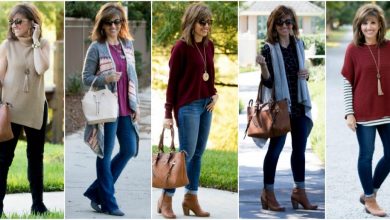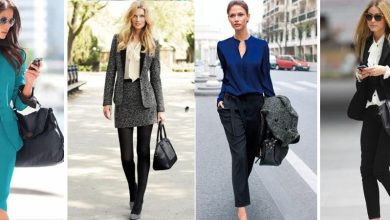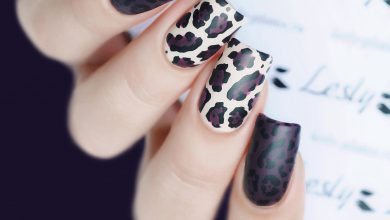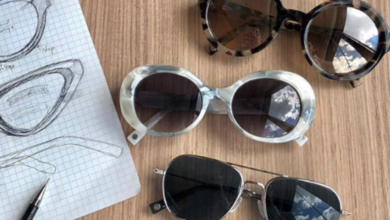
Beginners guide to clothes designing: I aim to equip you with the essential knowledge and skills you need to start creating your own stunning and unique garments. Covering everything from designing clothes for beginners to more advanced concepts, this guide will walk you through the fashion design basics and provide you with practical advice, step-by-step instructions, and real-life examples to help nurture your newfound passion for fashion.
Understanding the Basics of Fashion Design
Fashion is not only about clothing; it is also an expression of individuality and creativity. To succeed in the competitive world of fashion design, aspiring designers need to master the principles of apparel design and cultivate their personal style. This section will explore the importance of creativity and personal style in fashion, along with essential design principles that serve as the foundation of any successful clothing design.
The Role of Creativity and Personal Style
Creativity is the driving force behind any successful fashion design, allowing designers to push boundaries and create clothing that emulates beauty, art, and emotion. Personal style enables designers to develop a unique fashion identity, drawing from their cultural backgrounds, personal experiences, and artistic influences to establish a truly authentic aesthetic that sets them apart from the rest.
“Fashion is about dreaming and making other people dream.” – Donatella Versace
Nurturing personal style and creativity is an essential aspect of creative fashion design. To refine your signature aesthetic, consider the following:
- Study different fashion styles and find inspiration in various cultures, time periods, and art movements.
- Remain open to diverse influences, exploring new ideas and integrating them into your designs.
- Create mood boards and sketchbooks to document design ideas and inspirations.
- Refine your skills through practice, experimentation, and collaboration with other designers.

Essential Fashion Design Principles
Once a solid foundation of creativity and personal style has been established, mastering essential fashion design principles is crucial for any aspiring designer. These principles enable the creation of visually appealing and structurally sound garments, paving the way for success in the world of apparel design.
Some fundamental fashion design principles include:
- Balance: Create a harmonious design by distributing visual elements and details evenly across a garment.
- Proportion: Use scale and sizing to ensure that all design elements work together cohesively, strengthening the overall garment structure.
- Emphasis: Add focal points in a design to draw attention to key features and establish a garment’s unique appeal.
- Rhythm: Incorporate repetition, variation, and movement to create a visually engaging design that guides the viewer’s eye through the entire garment.
By understanding and applying these design principles, one can produce creative and visually captivating clothing that showcases their personal style while adhering to the foundational requirements of good design. The application of these principles, coupled with a strong sense of creativity, is the key to unlocking success in the world of fashion design.
Exploring Fashion Design Inspiration Sources
Finding the right fashion design inspiration is a vital part of the creative process. As a designer, you will want to explore various sources to spark your creative mind and develop original clothing design ideas that stand out in a competitive industry. In this section, we will delve into some of the key inspiration sources that can fuel your design concepts and capture the essence of the current fashion design trends.
Some of the most common and effective sources of fashion inspiration include:
- Nature and the environment
- Historic styles and eras
- Art, architecture, and photography
- Contemporary fashion trends
- Cultural heritage and traditions
- Personal experiences and emotions

To cultivate your personalized inspiration database, consider the following tips:
- Explore various channels, such as books, magazines, exhibitions, and social media platforms
- Keep a visual diary or mood board to collect and organize your favorite images, colors, textures, and patterns
- Continuously nurture your creative mind through workshops, courses, and collaboration with other artists
Remember, the key to creative clothing design is to allow yourself to be inspired by everything around you. Always keep your eyes and mind open for new experiences, and don’t be afraid to venture into uncharted territories in your pursuit of the perfect design idea.
Once you have gathered a wealth of inspiration, it’s time to turn these abstract concepts into tangible designs. Here are some steps to help you translate your inspiration into creative clothing designs:
- Begin by sketching multiple iterations of your ideas, experimenting with silhouette, proportion, and details
- Consider the use of color, texture, and fabric choices to tell a coherent story through your designs
- Balance innovation with wearability, keeping in mind the target audience and practicality of your clothing
- Expand and challenge your design skills through research, experimentation, and feedback from fellow designers
To stay ahead in the world of fashion design and continuously generate innovative clothing design ideas, make a habit of regularly seeking out fresh sources of inspiration. By doing so, you will enable yourself to break away from conventional design norms and elevate your creations, ultimately leaving a lasting impression in the fashion industry.
Gathering Your Fashion Design Toolkit
Equipping yourself with the right tools is essential to excel in the world of fashion design. In this section, we will discuss both traditional sketching materials and cutting-edge clothing design software to help you bring your creative visions to life.
Choosing the Right Sketching Materials
High-quality sketching materials can make a significant difference in your fashion design journey. To facilitate the process of creating stunning fashion illustrations, we have compiled a list of essential sketching materials for fashion:
- Drawing pencils: Opt for a range of pencil grades (2H, H, B, and 4B) to achieve different shades and textures in your sketches.
- Drawing paper: Choose sketch pads or drawing paper with a smooth surface, perfect for detailed fashion sketches.
- Colored pencils: These can add depth and vibrancy to your illustrations and help you visualize the color stories for your designs.
- Markers or pens: Permanent markers and fine-liner pens are ideal for adding crisp lines and sharp details to your illustrations.
- Eraser and sharpener: A quality eraser and pencil sharpener are indispensable for maintaining clean and precise sketches.
Pro tip: Experiment with different materials to find out which ones suit your personal style and preferences best.

Clothing Design Software for Beginners
In today’s digital era, mastering clothing design software is just as crucial as mastering traditional sketching techniques. There is a variety of garment designing programs to choose from, with each offering unique functionalities tailored to your specific needs. To help you get started, we have compared some popular fashion design tools and software:
| Clothing Design Software | Key Features | Best for |
|---|---|---|
| Adobe Illustrator | Vector-based design, advanced drawing tools, extensive library of design assets | Professionals and serious fashion design students |
| CorelDRAW | Vector graphics, customizable templates, font management | Beginners and intermediate-level designers |
| CLO 3D | Real-time 3D visualization, pattern design, animation, accurate fabric draping | Advanced fashion designers seeking 3D capabilities |
| Tailornova | Pattern drafting, 3D preview, custom-fit pattern adjustments | Independent designers and pattern makers |
Before committing to any specific clothing design software, we recommend trying out free trials or demos to see which one best aligns with your needs and skill set.
Investing time in learning clothing design software and improving your skills will vastly enhance your design capabilities, making it an indispensable part of your fashion design toolkit.
Mastering Fashion Sketching Techniques
Mastering advanced fashion sketching techniques is pivotal in making your designs realistic and expressive. In this section, we will delve into rendering textures, creating movement, and adding detailing to fashion illustrations, equipping you with essential clothing design tutorials and fashion sketching tips for successful fashion design.

“The secret to great fashion illustration is having a strong foundation in sketching techniques, allowing you to explore your creativity and effectively communicate your design ideas.”
- Rendering textures: An essential skill in fashion sketching is the ability to render a variety of textiles and material finishes. Experiment with different pencil strokes and shading techniques to accurately represent fabrics such as silk, denim, and lace in your illustrations.
- Creating movement: To convey the fluidity and drape of your garments, practice sketching your designs in various poses and with dynamic lines. This helps to create a sense of motion, bringing your fashion illustrations to life.
- Adding detailing: Paying attention to the fine details is crucial in creating realistic and professional-looking fashion sketches. Enhance your illustrations by incorporating design elements like stitching, buttons, and accessories to elevate your designs and capture the essence of your concept accurately.
Develop a Step-by-Step Sketching Process
To hone your fashion design tips and sketching skills, establish a step-by-step sketching process that suits you, and practice it diligently. Here is a suggested outline:
- Begin with a quick gesture sketch to capture the overall movement and angle of the figure.
- Add basic shapes to outline the body’s structure and proportions.
- Refine your sketch by adding details such as facial features, hairstyle, and body contouring.
- Outline the garment silhouette on the figure, ensuring correct drape and fit.
- Render textures and shading to accurately represent the chosen fabrics and materials.
- Add fine details such as stitching, buttons, and accessories to complete your illustration.
Fashion Sketching Tips for Continuous Improvement
Maintain steady progress in your sketching journey with the following fashion sketching tips:
- Practice regularly: Consistency is key to improving your fashion sketching abilities – dedicate time to practice your skills and learn from your mistakes.
- Analyze fashion illustrations: Study existing fashion illustrations and analyze how different artists represent textures, movement, and details in their drawings.
- Seek feedback: Share your work with peers or industry professionals for constructive criticism and guidance on how to enhance your skills.
- Experiment: Innovate with various sketching tools, materials, and techniques – this can lead to potential breakthroughs and unique artistic styles.
In conclusion, mastering fashion sketching techniques allows you to bring your designs to life, effectively communicate your ideas, and provide a solid foundation for successful fashion design. By practicing these clothing design tutorials and fashion sketching tips, you will improve your drawing skills and refine your unique fashion illustration style.
Introduction to Textile Selection for Clothing Designs
One of the most crucial aspects of fashion design is textile selection. The right fabric can make or break a garment, as it greatly influences the overall look and function of the design. In this section, we will discuss various textiles and their properties, suitability for different design types, and how the right fabric choice can enhance the overall look and function of a garment.
Textile selection for fashion design is a critical aspect that impacts the aesthetics, durability, comfort, and functionality of clothing.

When selecting textiles for your clothing designs, understanding the textile design principles is essential. The main factors to consider in fabric selection for clothes are:
- Drape
- Weight
- Texture
- Pattern
- Composition
- Water-resistance
- Tensile strength
Here are some popular types of clothing construction materials and their characteristics:-
| Textile Type | Properties | Best Suited For |
|---|---|---|
| Cotton | Soft, comfortable, breathable, natural fiber | T-shirts, dresses, denim, loungewear |
| Silk | Luxurious, smooth, lightweight, natural fiber | Evening wear, lingerie, blouses, dresses |
| Wool | Warm, durable, natural fiber, versatile | Coats, scarves, sweaters, suits |
| Linen | Crisp, breathable, natural fiber, lightweight | Summer wear, shirts, skirts, dresses |
| Polyester | Durable, lightweight, quick-drying, synthetic fiber | Sportswear, jackets, dresses, blouses |
| Rayon | Smooth, good drape, lightweight, semi-synthetic | Blouses, dresses, skirts, ties |
The fabric you choose should be based on the functionality and aesthetics you want to achieve. Understanding the characteristics and pros and cons of each material will help you make better decisions when selecting the perfect textile for your clothing designs. So, consider the properties, durability, and sustainability aspects of the materials you use in your fashion designs.
The Apparel Design Process: From Concept to Sketch
The apparel design process is a series of sequential steps that guide a designer from an initial concept to a preliminary sketch, ultimately forming the blueprint for garment development and production. In this section, we will walk you through the key stages of the clothing design process, helping you turn your creative ideas into tangible fashion sketches.

- Concept Generation
Before you dive into fashion sketching, it’s essential to develop a clear concept of what you want to create. Use your personal style, artistic influences, or current fashion trends to form the basis of your idea. Look for inspiration in the world around you, including nature, art, and history, to help formulate a unique and engaging concept for your design.
- Research and Analysis
Thorough research is an integral part of the fashion design process, as it helps you to collect relevant information, identify trends, and uncover potential market opportunities. Study existing fashion collections and consumer preferences to understand what is currently in demand, while also examining the works of influential designers and industry pioneers.

- Mood Boards
Creating mood boards allows you to visualize your concept and establish a cohesive aesthetic for your collection. Compile images, color swatches, fabric samples, and other visual elements that match your theme or concept. Mood boards serve as a reference point throughout the apparel design process and keep your designs consistent and harmonious.
- From Idea to Fashion Sketching
After defining your concept and gathering inspiration, it’s time to translate your ideas into preliminary sketches. Start by drawing simple silhouettes of your garments and gradually add details, such as color, textures, and patterns. Develop a strong understanding of human anatomy and use it to accurately represent how your designs will look on real bodies. It’s essential to fine-tune your sketches as you progress, iterating and refining until you achieve the desired outcome.
In conclusion, the clothing design process is a meticulous journey that moves seamlessly from idea to fashion sketching. By following these steps, aspiring designers can establish a structured and deliberate approach to their creative endeavors, ultimately culminating in polished and professional-looking designs.
Garment Construction Methods for Beginners
Garment construction is an essential skill for fashion designers, involving various methods and techniques to create well-fitted clothes. In this section, we will provide insight into garment construction methods and pattern making to help beginners gain an understanding of the process and create stunning apparel designs.

Understanding Pattern Making Basics
Pattern making is the process of creating templates for each piece of a garment. These templates guide the cutting and sewing process, ensuring a precise fit. Proficiency in pattern making is vital for the successful execution of your garment designs. Let’s look at some fundamental steps and techniques in the pattern making process.
- Measure and draft the basic design: Begin by taking accurate body measurements and sketching a basic design on pattern paper. This initial sketch represents the foundation of your pattern, dictating the final shape and fit of the garment.
- Create blocks: Develop your basic blocks, which are reusable patterns customized to fit individual measurements. These blocks serve as a starting point for future designs, saving time and ensuring a consistent fit across garments.
- Add design features: Once you have your basic blocks, incorporate design elements such as darts, pleats, or ruffles by adjusting the initial sketches. This step allows you to transform your basic design into a unique and fashionable piece of clothing.
- Test and refine your pattern: Sew a sample garment using your pattern to check for fit and design specifics. Adjust and refine your pattern as necessary, to achieve the perfect balance between style and comfort.
There are various approaches to pattern making, including drafting, draping, and using computer software. The table below compares these different methods, helping you choose the most suitable technique for your needs.
| Method | Advantages | Disadvantages |
|---|---|---|
| Drafting |
|
|
| Draping |
|
|
| Computer Software |
|
|
With a strong foundation in garment construction methods and pattern making, you can confidently bring your clothing designs to life. As you progress in your fashion design journey, try different techniques and tools to perfect your garment construction skills and create outstanding apparel that reflects your unique style.
Fashion Illustration for the Aspiring Designer

Going beyond flat sketches, this section focuses on elevating your designs through dynamic fashion illustrations that capture the flow and drape of garments. This approach helps designers visualize how their creations will look when worn, allowing for more realistic fashion design outcomes. Let’s explore some garment design ideas and techniques that will enable you to create dynamic and realistic clothing designs.
“Fashion is about dressing according to what’s fashionable. Style is more about being yourself.” – Oscar de la Renta
Creating Dynamic and Realistic Designs
Dynamic fashion illustrations convey the essence of the clothing design by showing the movement and behavior of the fabric when worn. These illustrations are critical for creating exciting and effective presentations of your designs. Follow these tips to enhance your fashion illustration skills:
- Study and practice anatomy: A solid understanding of the human body, including muscles, bones, and proportions, is essential for drawing realistic figures. Attend life drawing classes or practice using online tutorials to hone your skills.
- Capture movement: Draw figures in different poses to showcase the fluidity of the garments. Incorporating movement creates an engaging visual narrative and helps the viewer understand the garment’s behavior.
- Focus on fabric draping: Observe how various textiles interact with the body and gravity, then incorporate those observations into your illustrations. This technique will give your drawings a more realistic appearance, enhancing their appeal.
- Add detail: Include stitching, seams, buttons, and other garment details to provide a comprehensive representation of your design.
Inspire yourself by researching the work of renowned fashion illustrators, such as David Downton, Rene Gruau, and Antonio Lopez. Analyze their techniques and incorporate elements that resonate with your personal style.
| Garment Design Element | Technique for Dynamic Illustration |
|---|---|
| Flowy dress | Create curved lines to emphasize the fluidity of the fabric and the soft movement of the garment. |
| Pleated skirt | Show the direction and depth of the pleats using varied line thickness and shading techniques. |
| Structured jacket | Use crisp lines and clear angles to convey the garment’s rigid structure and tailored silhouette. |
Mastery of realistic fashion illustrations not only enhances your design presentations but also gives you valuable insights into how the garments will appear when worn. Embrace these techniques to elevate your design skills and create dynamic clothing designs that truly capture the essence of your vision.
Developing Your Personal Clothing Line
As an aspiring fashion designer, starting a personal clothing line can be an exciting milestone in your career. Creating your own clothes and building a brand opens up creative and entrepreneurial opportunities. This section will guide you through the essential steps to develop a successful clothing line, focusing on identifying a niche, branding, and business considerations.

Identifying a niche is crucial, as it helps you define your target audience and create custom clothes that cater to their preferences. To explore potential niches, consider these factors:
- Your personal style and design aesthetics
- Market trends and opportunities
- Underserved segments or unmet needs within the fashion industry
Once you have identified a niche, it’s time to build your fashion design brand development. Branding involves defining the visual and storytelling elements that convey your unique identity, values, and design philosophy. Consider these aspects when developing your brand:
- Your logo and color palette, which should be consistent across all marketing materials
- A compelling brand story that establishes an emotional connection with your target audience
- Your unique selling proposition (USP), highlighting what sets your clothing line apart from competitors
It’s important to address the business considerations involved in starting a clothing line. This includes aspects such as:
Understand your market, plan your finances, and build a strong distribution and marketing strategy.
Here’s a quick overview of essential business considerations for launching your personal clothing line:
| Business Consideration | Details |
|---|---|
| Market Research | Analyze the competitive landscape, customer behavior, and market trends to make informed business decisions. |
| Financial Planning | Estimate your costs, set realistic pricing, and create a budget to ensure financial stability. |
| Manufacturing & Production | Find reliable suppliers and manufacturers for producing your clothes at the desired quality and cost. |
| Distribution Channels | Identify and forge partnerships with retailers, e-commerce platforms, and other distribution channels to maximize reach and sales. |
| Marketing & Promotion | Develop a comprehensive marketing plan that covers both online and offline channels, from social media to fashion events. |
Taking these steps will help you become not just a designer but a fashion entrepreneur with a successful personal clothing line. Remember to stay adaptable to changes in market trends, customer preferences, and the competitive landscape as you grow and expand your brand.
Creating Clothing Patterns: A Step-by-Step Guide
Creating clothing patterns is an integral part of the clothing design process. In this section, I will provide a step-by-step guide on how to transfer initial sketches onto patterns and later adjust them to achieve the perfect fit.
Transferring Your Designs onto Patterns
To successfully transfer designs to patterns, follow these steps:
- Begin by sketching the design onto pattern paper, starting with the key measurements and basic shapes of the garment.
- Add seam allowances and design details such as darts, pleats, and pockets, keeping in mind the functionality and aesthetics of the garment.
- Label each pattern piece with the relevant name (e.g., front bodice, back skirt) and any necessary markings such as grain lines, notches, or fold lines.
- Cut out the pattern pieces, taking care to preserve the design integrity and ensure accurate edges.

Remember that practice makes perfect, and don’t be afraid to revise and refine your patterns as needed. The more you create, the better your pattern-making skills will become.
Adjusting Patterns for Perfect Fit
Adjusting clothing patterns for an optimal fit is essential to creating garments that cater to various body types. Consider the following garment fitting techniques:
**Sloping Shoulder Adjustment:** If a garment’s shoulder seam tends to fall off, adjust the pattern by lowering the shoulder edge of the front bodice and extending the armhole seam. This will create a more comfortable fit across the shoulder area.
**Full Bust Adjustment:** Increase the width and length of the front bodice pattern to accommodate a larger bust. Perform this adjustment by slicing the pattern vertically and horizontally, then spreading the pattern pieces apart to form a “Y” shape with additional space in the needed areas.
**Waistline Adjustment:** Add or remove fabric from the waistline by adjusting the side seam. For a smaller waist, shorten the side seam, and for a larger waist, lengthen it.
**Hip and Thigh Adjustment:** Alter the pattern’s hip and thigh areas using the side seam or by adding width to the front and back pieces of pants or skirts. This will create more room for fuller hips and thighs, or provide a closer fit for narrower figures.
Utilizing these techniques will ensure that the garments you design cater to a wide range of body types, enhancing comfort and wearability.
| Fitting Technique | Description of Adjustment |
|---|---|
| Sloping Shoulder Adjustment | Lower the shoulder edge of the front bodice and extend the armhole seam. |
| Full Bust Adjustment | Slice the pattern vertically and horizontally, then spread the pattern pieces apart to form a “Y” shape. |
| Waistline Adjustment | Shorten or lengthen the side seam based on the desired waist size. |
| Hip and Thigh Adjustment | Alter the side seam or add width to the front and back pieces of pants or skirts. |
Maintaining design integrity throughout the pattern making process and mastering garment fitting techniques will contribute significantly to your success as a clothing designer. With practice and persistence, you will find that creating clothing patterns becomes second nature as you continue along your design journey.
Conclusion
Embarking on a fashion design journey can be both exhilarating and challenging. With dedication and determination, you can experience incredible personal growth in this field. Clothing design reflection is an integral part of this process, allowing you to critically examine your achievements and identify areas for improvement and development.
Throughout this beginner’s guide, you have been introduced to a range of essential concepts and techniques that can help you navigate the world of fashion design. From mastering sketching skills to understanding textile selection, garment construction, and ultimately creating your own clothing line, these insights will serve as a strong foundation for your future endeavors.
As you continue to explore new dimensions in your fashion design path, remember that success in this industry is built on perseverance, creativity, and continuous learning. By implementing the fashion design techniques summarized here, you will be well-equipped to confidently venture into the captivating world of clothing design and make your mark in the industry.
FAQ
How can I find inspiration to start designing clothes?
Inspiration can come from many sources, including nature, historic styles, art, and contemporary trends. Cultivating a personalized inspiration database and translating inspiration into tangible design concepts will help fuel your creative process.
What are the essential tools I need for fashion sketching?
To start fashion sketching, you’ll need basic tools such as pencils, erasers, papers, and a ruler. As you progress, consider using different pencil types, markers, and colored pencils for more detailed and expressive illustrations.
Which software should I use for digital fashion designing as a beginner?
There are various software options available for digital fashion designing depending on your needs and budget. Some popular options include Adobe Illustrator, CorelDRAW, and CLO3D. Be sure to research and test different programs to find the one that best suits your requirements.
How can I develop my personal clothing line?
To develop your personal clothing line, start by identifying your niche, creating a solid brand identity, and understanding the business considerations of beginning a clothing line. Focus on developing your unique designs and build connections within the fashion industry to help your brand grow.
How do I transfer my designs onto patterns?
To transfer your designs onto patterns, first create a flat sketch of your design, detailing all seamlines and design features. Then, utilize pattern making techniques like drafting, draping, or using existing commercial patterns as a base to create accurate patterns for your garment.
What should I consider when selecting textiles for my clothing designs?
When selecting textiles for your designs, consider factors such as the fabric’s properties (e.g. weight, drape, and stretch), suitability for your design, and how the fabric choice can enhance the overall look and functionality of the garment.









